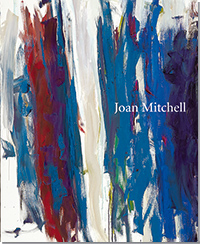 |
|
|||
Joan Mitchell German / English |
With ten paintings from 1951 to 1991, here is a select introduction to the work of abstract painter Joan Mitchell. It covers all work phases: her breakthrough in the world’s new art capital, New York, as part of the circle of abstract expressionists of the late 1940s, the discovery of natural elements for her art with a move to France in the following decade, and the more airy brushwork of her late paintings.
BIOTOPES OF PAINTING ... by the late 1950s the élan vital of Mitchell’s work was mostly related to nature. The earlier, more expressive approach was overtaken by paintings that relied on the productive, self-structuring powers existing both in art and in nature. Mitchell combined both worlds without harnessing them into representational duties, but also from a mere “reenactment” of natural forces. For her, art became a vital, creative system that showed a structural kinship to ever-changing, constantly renewing nature. This explains the pulsating, flourishing, and branching of her lines—something very alien to serial image concepts—which command the biotope of Mitchell’s paintings. The term “abstract impressionism,” originally coined by Elaine de Kooning, offers a good description of these characteristics, provided one doesn’t think of 1870s early impressionism, but rather of the flowing, abstracted image worlds of late Monet. Nature for Mitchell was not a static environment, but a changeable power whose creative potential she articulated in the driving forces of her dense color lines. Representational only in the broadest sense of the word, proliferating bundles of these lines move closely around each other in her late paintings, which seem to practically have internalized natural forces. Accordingly, Mitchell’s late work negates the boundaries between art and nature. Her paintings are proof of another kind of modernism, which is not willing to sacrifice a longing for the “other,” for the nature inside and around us, on the altar of aesthetic autonomy.
...
|